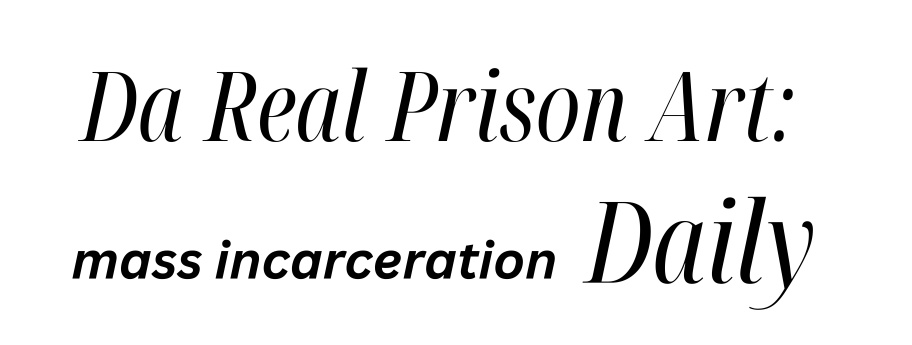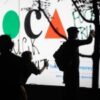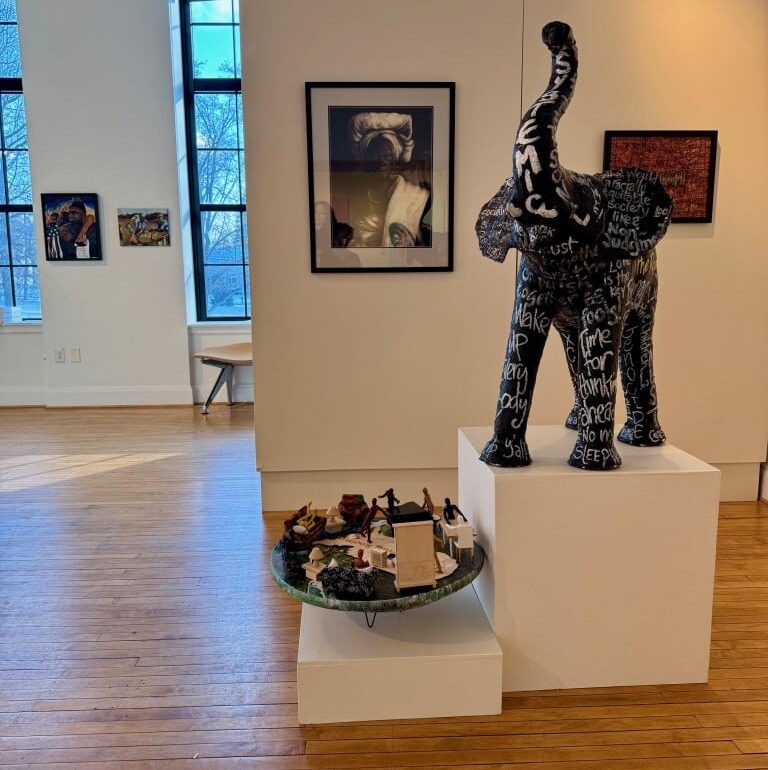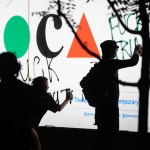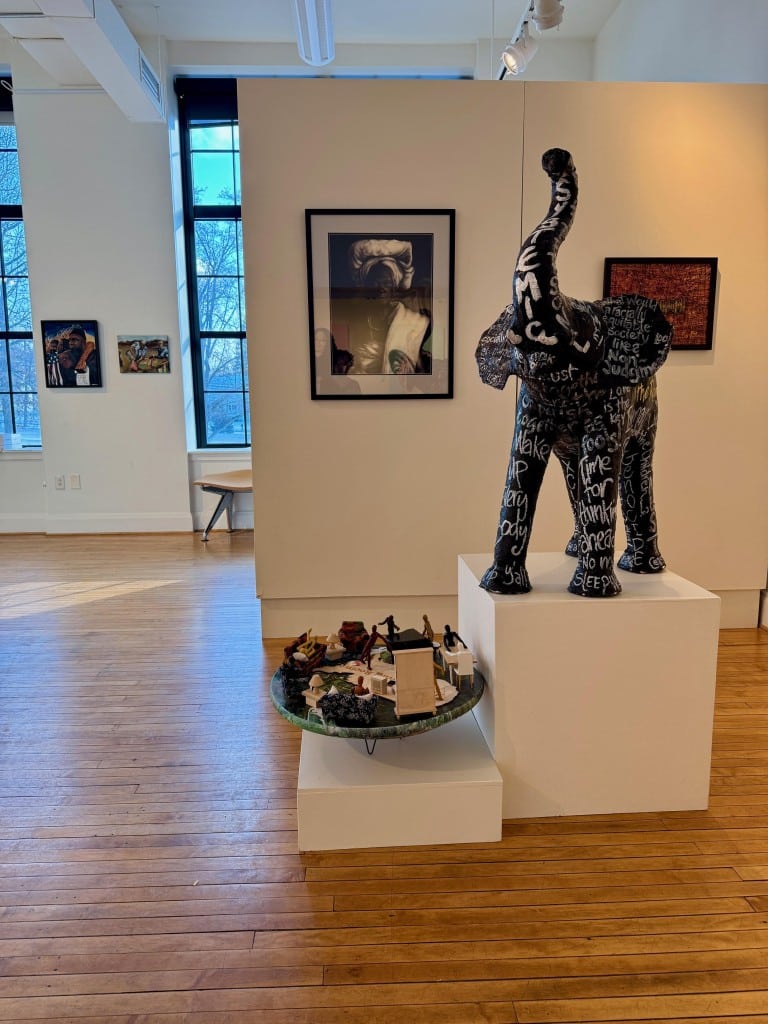
In bringing the exhibition “Home Free” to the McConnell Arts Center of Worthington, the founders of the Returning Artists Guild (RAG) are continuing to expand on their mission, advancing the cause of abolition into corners that might have previously been inaccessible to them.
“When you get to have a show like this in a more traditional space, I think the work looks a little bit different, and the audience looks a little different, and that’s exciting,” said artist and RAG cofounder Aimee Wissman, who joined fellow cofounder Kamisha Thomas for a mid-January interview at Two Dollar Radio Headquarters. “So, hopefully that crowd shows up and we’ll get to talk to them about everything that happens when someone is incarcerated. … There are a lot of misconceptions around who’s in prison, why they’re there, what opportunities exist, and what the experience is like. And that’s one of the reasons why I’m willing to keep having that conversation with people. I can be an access point for that knowledge, but we also want to move the conversation toward what a free future can look like as quickly as we can.”
The work on display in “Home Free,” which opens at the McConnell on Thursday, Jan. 23, has been done by incarcerated and formerly incarcerated artists, much of it reflecting on aspects of dehumanization central to imprisonment. At the same time, there are also flashes of joy and deep reserves of strength to be witnessed, with artists creating works that make their refusal to let the carceral system break their collective spirit clear. In a video installation previously on view at the now-shuttered Vanderelli Room, Thomas repurposed monitoring equipment once installed in prisons, retrofitting the gear to stream abolitionist short films – quite literally dismantling the system and applying those tools to the cause of freedom.
“I’m super glad there’s a balance in the show, where you can have these heavy moments and then something that’s a little easier on the eyes, so you have the space to process this other thing you just saw,” Wissman said. “And I think that also speaks to the idea that it’s not a one-size-fits-all experience, and it’s not that there’s no joy in prisons. That idea is a lie. The human spirit can thrive anywhere.”
Wissman said that “five or six” of the artists featured in “Home Free” are currently incarcerated, giving a rare voice to people purposely cut off by a system that doesn’t want to grant the outside world access to their stories. Communicating with the incarcerated is intentionally difficult, Wissman said, with each prison serving as its own fiefdom, applying different rules and standards related to how contact is approved and monitored.
In working with incarcerated artists, Wissman said she has to jump through myriad hoops, generally coordinating with a point of contact outside of the prison, often a family member, who can then help to facilitate art pickups and handle payments. (Proceeds from work sold in RAG’s exhibitions go 100 percent to the artist.) Even in the course of reporting this piece, multiple attempts were made to try and speak with one of the incarcerated artists featured at the McConnell, which necessitated Wissman making initial contact, followed by a call from the artist to my phone, which could arrive at virtually any day or time. If I happened to miss the call, which happened on one occasion when I was walking our dog, the artist had to wait 24 hours before making another attempt. In the end, we weren’t able to connect prior to the deadline.
And so, a heavier burden to speak up often falls on the formerly incarcerated, which can mean continuing to shoulder past traumas that many would understandably prefer not to revisit. Thomas, for her part, relayed that she carries these scars whether she’s actively engaged in abolition or not, so better to speak up where she can. “It’s not like we have a choice to let go of it, because it affects us every day, in every aspect of our lives,” said Thomas, who will join Wissman, In the Belly’s Safear Ness, and artist Kirsta Niemie Benedetti in conversation at the McConnell on Wednesday, Feb. 26, discussing the work of abolition. “Why not pay attention to it and process it and keep healing? Because for me, spreading the word, making people aware, getting people to think differently than they might have thought before, that’s all part of the healing process.”
Not that it can’t come at a cost. Recently, Wissman has been struggling with the limits of the human body, wondering how much pain and trauma it can contain before giving out. “I don’t know how we’re supposed to hold all of this all of the time, really, and there are definitely levels of burnout and emotional exhaustion,” she said. “But like Kamisha said, it’s impossible to separate what happened or what is from what is next. And I don’t know if there’s another path forward for me.”
“This shouldn’t be how we have to dedicate our time,” Thomas said. “But somebody has to do it, so why not people who have lived through it and can now try to conceptualize something different.”
This post was originally published on this site be sure to check out more of their content.
